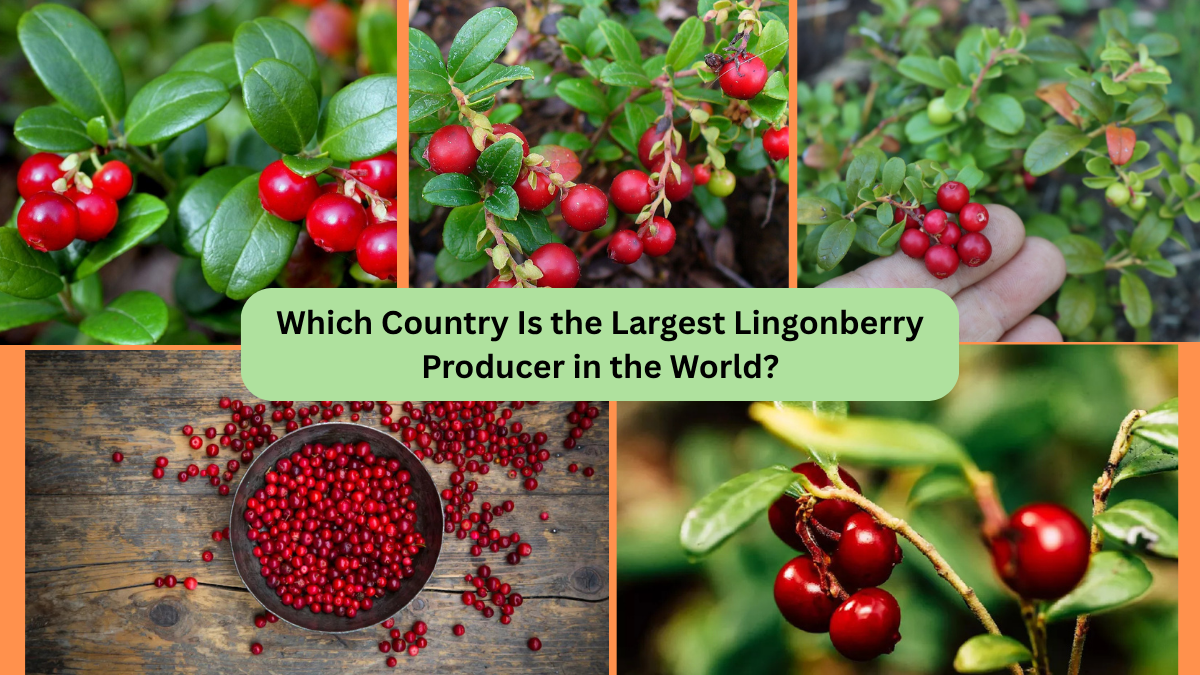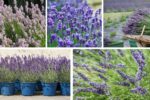Among the treasured wild berries of the Northern Hemisphere, lingonberries hold a special place — celebrated not just for their tart, refreshing flavor but also for their deep cultural, culinary, and medicinal significance. While they grow naturally across North America, Europe, and parts of Asia, one nation stands tall as the largest producer of this vibrant red berry.
So, which country is the largest lingonberry producer in the world? In this article, we’ll uncover the answer while exploring the history, characteristics, uses, health benefits, and global production landscape of this beloved berry.
What Are Lingonberries?

Lingonberries (Vaccinium vitis-idaea) are small, bright red berries native to the boreal forests and arctic tundra of the Northern Hemisphere. Often compared to cranberries in appearance and taste, lingonberries grow on low, evergreen shrubs and are cherished for their bold, tangy flavor.
Quick Facts:
- Scientific Name: Vaccinium vitis-idaea
- Common Names: Cowberry, Foxberry, Mountain Cranberry, Red Whortleberry
- Appearance: Small, round, glossy red berries
- Taste: Tart, with a slightly sweet aftertaste
- Native Range: Scandinavia, Russia, Alaska, Canada, and Northern Europe
- Harvest Season: August to October
Which Country Is the Largest Lingonberry Producer in the World?
Russia holds the title of the largest lingonberry producer in the world.
With its vast expanses of boreal forests and arctic landscapes stretching across Siberia and the Russian Far East, Russia naturally grows more lingonberries than any other country. While lingonberries are still mostly harvested from the wild rather than cultivated commercially, Russia’s immense territory and rich tradition of berry foraging ensure it dominates global production.
Why Russia Leads in Lingonberry Production
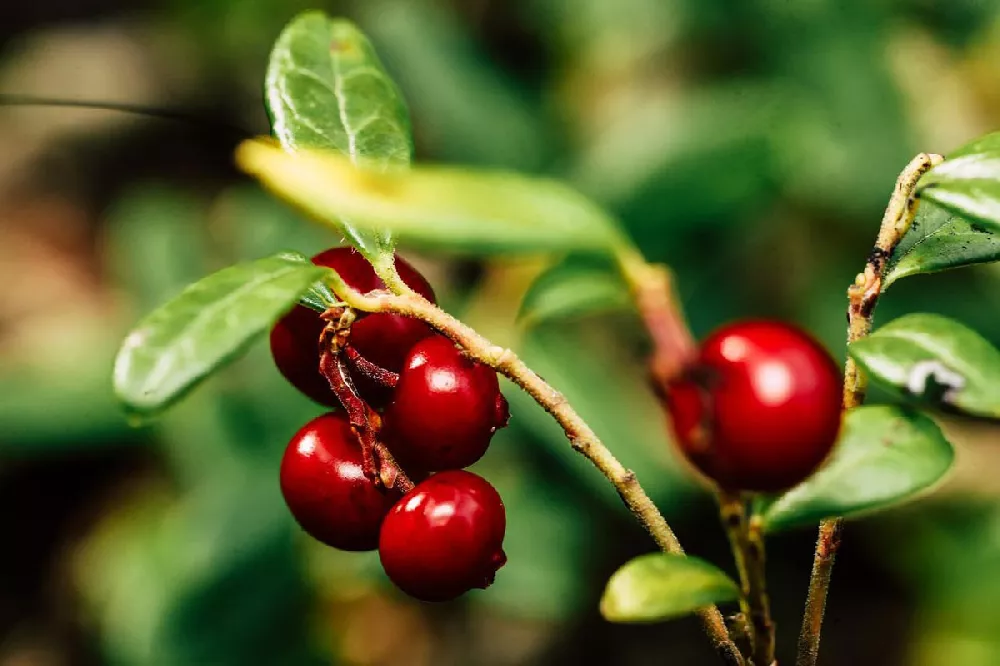
Several key factors make Russia the global leader in lingonberry production:
Expansive Boreal Forests
Russia’s taiga, the largest forest biome on Earth, offers ideal conditions for wild lingonberries. These acidic, nutrient-poor soils and cool climates are perfect for the berry’s growth.
Cultural Importance
For centuries, Russians have foraged lingonberries for use in traditional medicine, cooking, and winter preserves. Berry foraging remains a popular activity in rural communities, contributing to large seasonal harvests.
Commercial Harvesting and Export
In recent decades, Russia has developed an organized berry industry focused on gathering wild lingonberries for processing into jams, juices, syrups, and exports to Europe and Asia.
Naturally Favorable Climate
Lingonberries require cold winters, moderate summers, and acidic soils — conditions found abundantly in northern Russia, where the berries grow prolifically without needing cultivation.
Global Lingonberry Production Overview
While Russia leads, several other countries also produce significant quantities of lingonberries, particularly in Northern Europe.
| Country | Estimated Share of Global Production |
|---|---|
| Russia | 60–65% |
| Sweden | 15% |
| Finland | 10% |
| Norway | 5% |
| Canada | 3–5% |
| United States (Alaska) | 2–3% |
Cultivation and Harvesting Practices
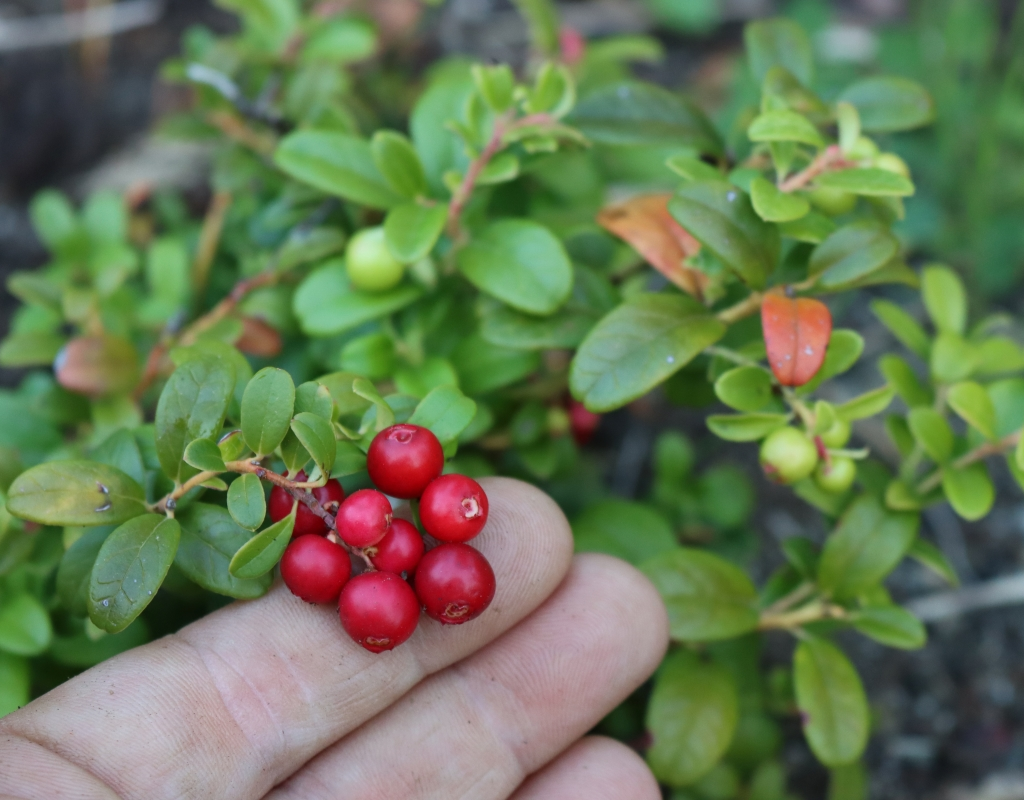
Lingonberries are unique in that the majority of their global supply is still harvested from the wild. Cultivation attempts exist, particularly in Sweden and Finland, but commercial-scale farming remains limited due to the berry’s preference for specific soil and climate conditions.
Wild Harvesting:
- Typically done in late summer to early autumn.
- Picked by hand or with berry combs.
- Collected in forests, peat bogs, and tundra regions.
Cultivation:
Some Scandinavian countries have established lingonberry farms, using acidic, sandy soils and mimicking wild growing conditions. However, yields are generally lower than wild harvesting.
Traditional and Modern Uses of Lingonberries
Lingonberries have long held a place in northern culinary traditions and folk medicine.
Culinary Uses:
- Lingonberry Sauce: A famous Scandinavian condiment, traditionally served with meatballs, game, fish, and pancakes.
- Jams and Preserves: Lingonberries are made into sweet-tart preserves to enjoy year-round.
- Juices and Syrups: Popular beverages in Sweden, Finland, and Russia.
- Desserts: Tarts, cakes, muffins, and pies feature lingonberries for their tangy flavor.
Medicinal and Nutritional Uses:
Historically, lingonberries were prized for their health-promoting properties:
- Used to treat urinary tract infections
- Considered a natural antioxidant and anti-inflammatory
- Beneficial for digestive health
- Traditionally preserved in water or sugar to provide vitamins during harsh winters
Modern Applications:
Today, lingonberries are featured in:
- Nutraceutical products
- Organic skincare formulas (rich in antioxidants and vitamins)
- Functional health beverages and dietary supplements
Health Benefits of Lingonberries
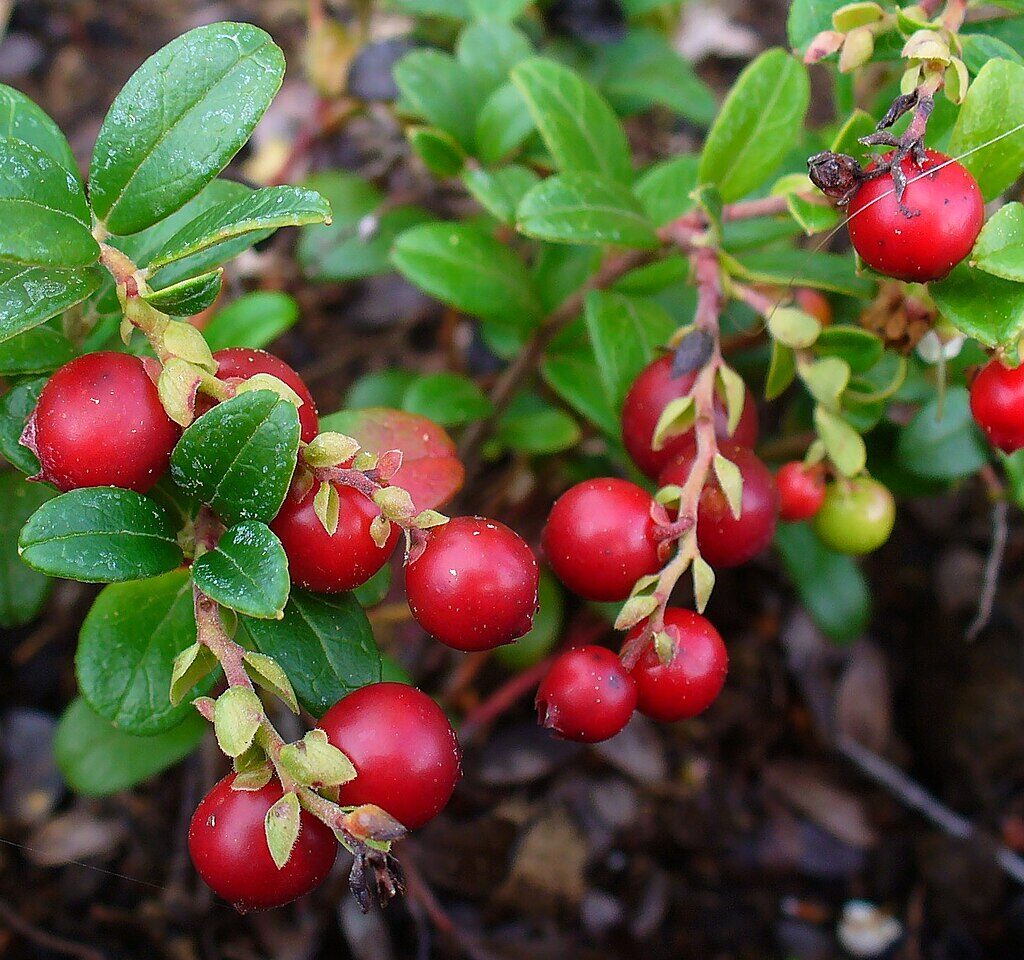
Lingonberries may be small, but their nutritional and medicinal value is immense.
Nutritional Profile (per 100g of fresh berries)
- Calories: 56 kcal
- Vitamin C: 11 mg
- Fiber: 2.5 g
- Vitamin A, E, and manganese
- Rich in polyphenols and flavonoids
Proven Health Benefits
- Fights urinary tract infections
- Supports heart health
- Boosts immune system
- Protects against oxidative stress
- Promotes healthy digestion
- May help regulate blood sugar
Studies have shown that lingonberries contain quercetin and proanthocyanidins, powerful compounds linked to reduced inflammation, improved cardiovascular health, and antioxidant effects.
Lingonberry Production in Other Countries
Sweden
Sweden ranks second globally in lingonberry production. Berry foraging is a popular summer tradition, and lingonberries are essential in Swedish cuisine. The famous IKEA meatball dish traditionally comes with lingonberry jam.
Finland
Finland produces both wild and cultivated lingonberries. The country values the berry for its health benefits, exporting juices and jams across Europe and Asia.
Norway
Lingonberries grow abundantly in Norway’s forests, with locals using them in both traditional dishes and modern desserts.
Canada
In Canada’s subarctic regions, particularly in Newfoundland and Labrador, lingonberries are known as partridgeberries and are an important traditional food.
Alaska
In Alaska, lingonberries are foraged by indigenous communities and used in traditional recipes, preserves, and local delicacies.
Future Outlook for Lingonberry Demand and Production

As global demand for superfoods and antioxidant-rich berries rises, lingonberries are gaining popularity beyond their traditional markets. Key trends include:
- Growth in organic food and health supplement markets
- Increasing use in functional beverages and natural skincare
- Rising demand in Asia and North America for Scandinavian berry products
Russia’s vast natural resources ensure it will remain the dominant producer, though Scandinavian countries continue to expand their share through niche markets and value-added products.
Conclusion
In summary, Russia proudly holds the title as the largest lingonberry producer in the world. Its expansive forests, cultural traditions, and thriving wild berry industry allow it to gather more lingonberries annually than any other nation.
From traditional Scandinavian kitchens to modern health supplements and gourmet desserts, lingonberries remain a beloved northern treasure — tart, bold, and packed with health benefits. And as demand for wild, nutrient-rich berries continues to rise globally, the future of the humble lingonberry looks as bright and promising as its vivid red color.
